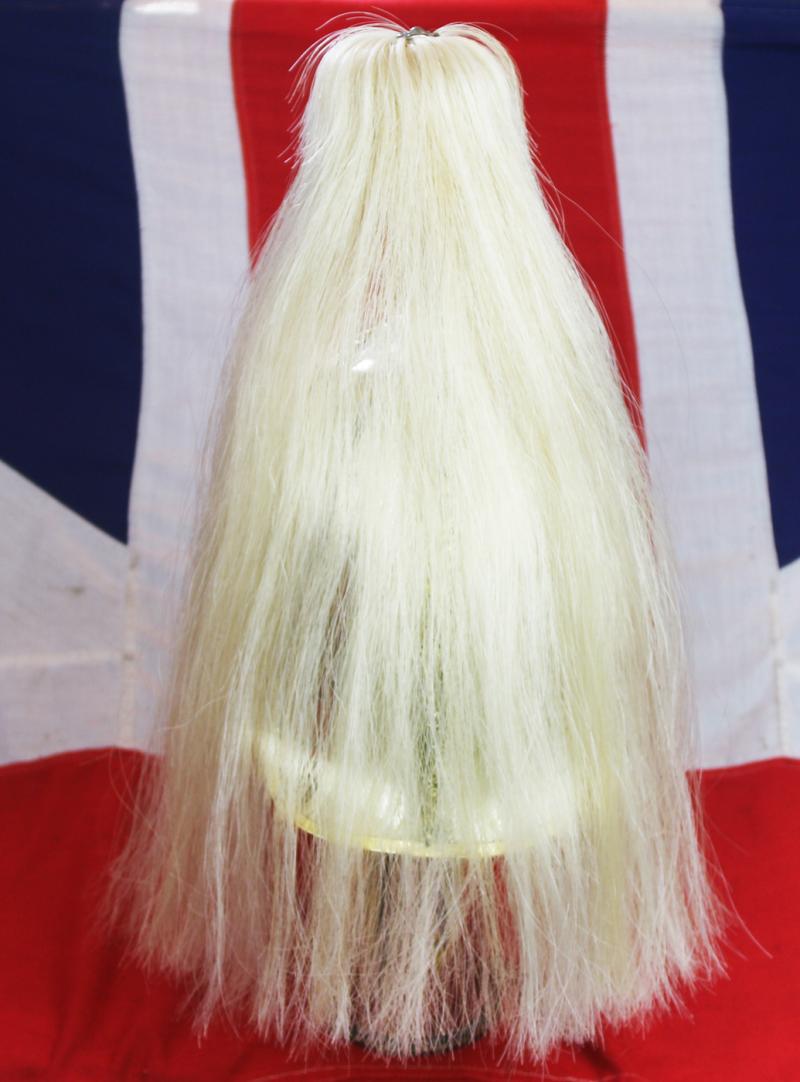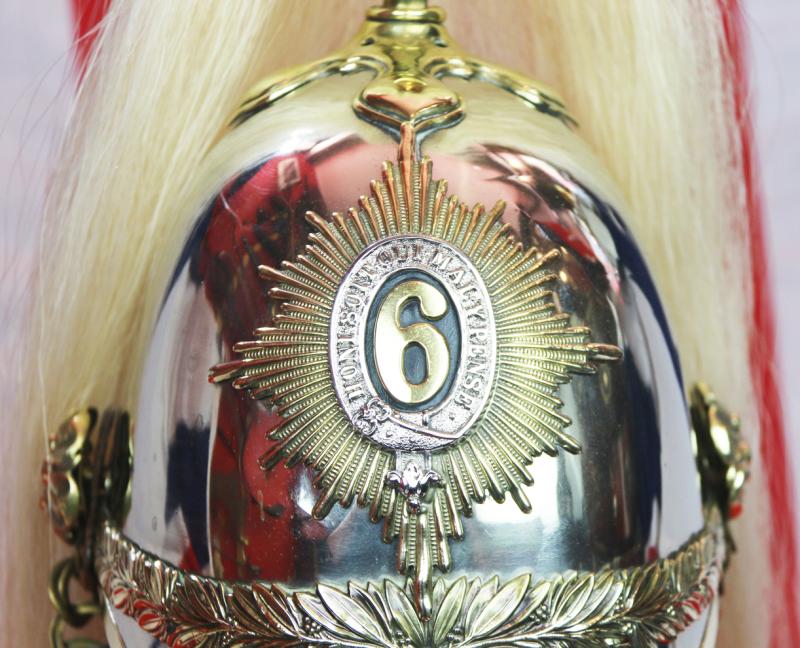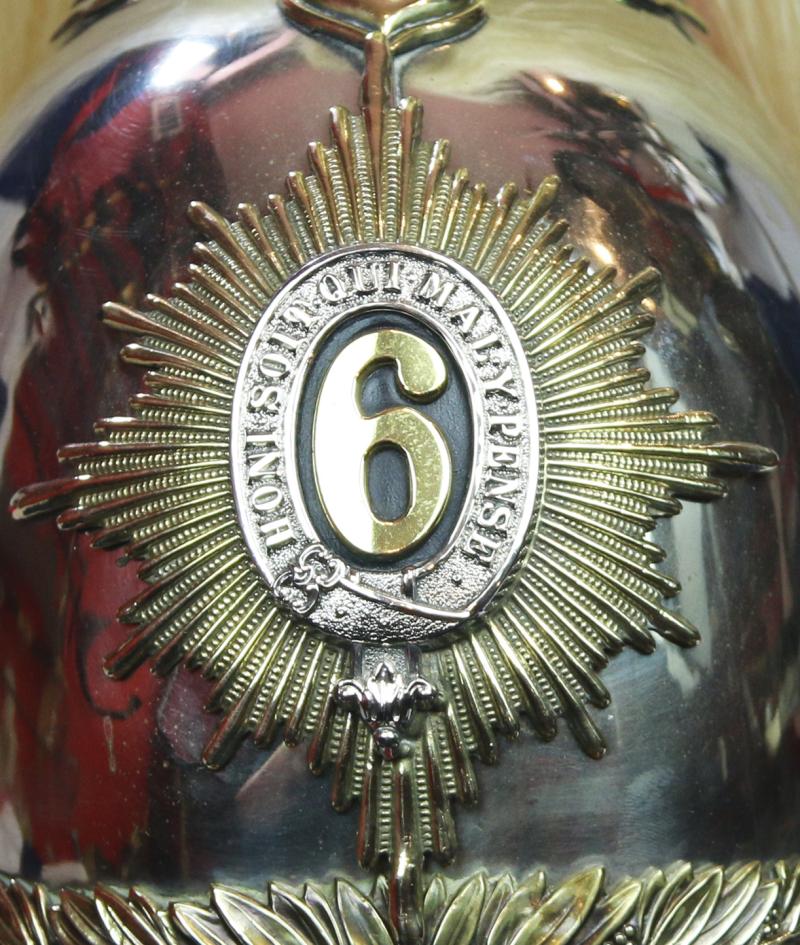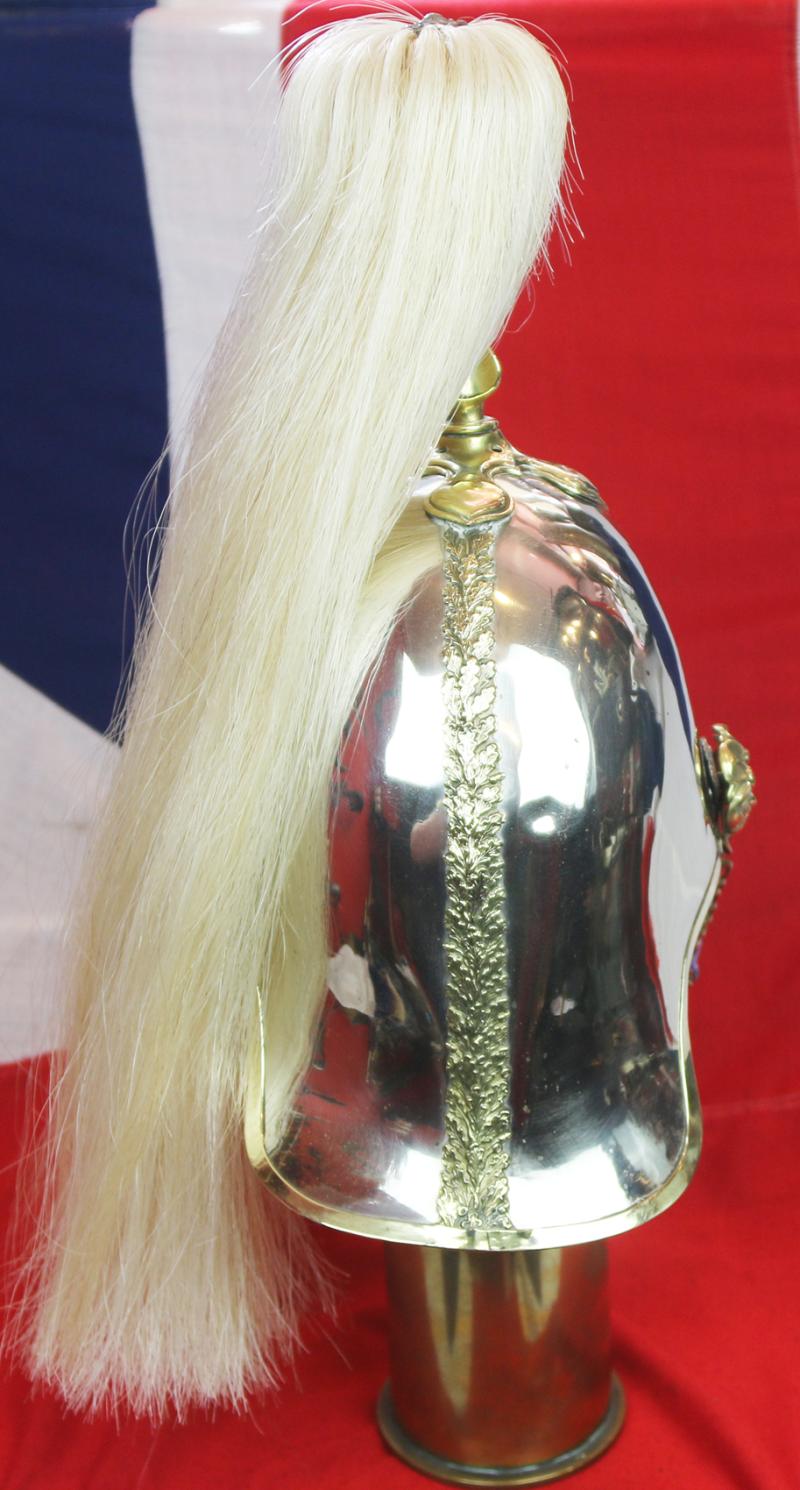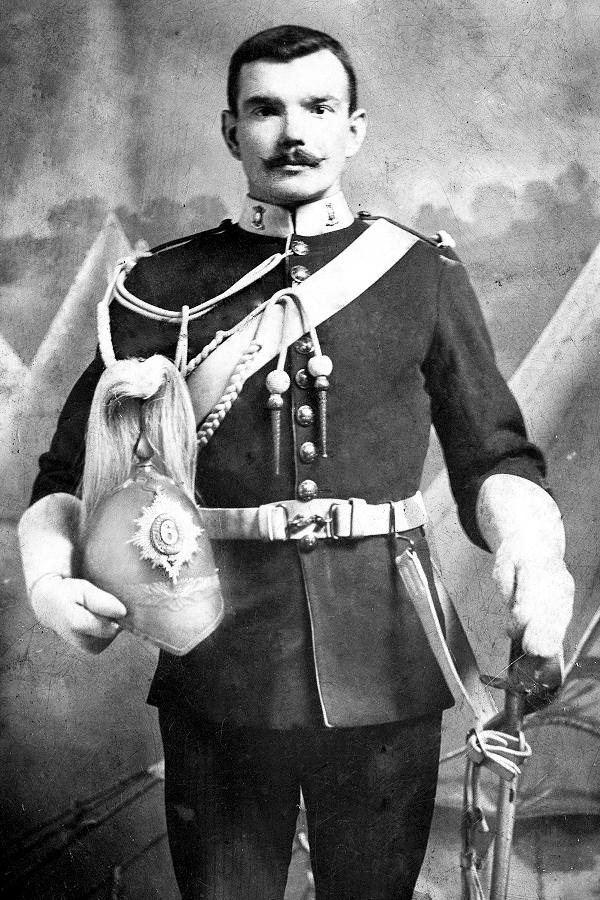A Wonderful, Original, Antique Victorian Helmet of the 6th Dragoons the Inniskillins. One of the Great Irish Cavalry Regiments in the British Army & One of The Most Desirable of All The Victorian Regimental Helmets
One of the best surviving examples one can see in or out of a museum
They served in the Crimea in 1854, losing all its horses en route in a fire on board its troop ship, but still managing to take part in the charge of the Heavy Brigade at Balaklava.
The regiment was deployed to the Crimea in April 1854 but during the voyage the regiment's transport ship Europa sank with the loss of the commanding officer, Lieutenant Colonel Willoughby Moore, and 17 of his men. Lieutenant-Colonel Henry Dalrymple White took over command of the regiment and led it in action at the Battle of Balaclava in October 1854.
The first assault line consisted of the Scots Greys and one squadron of the Inniskillings, a total of less than 250 sabres. Only when the RSMs declared themselves happy with the alignment did Scarlett order his bugler to sound the 'Charge'. The idea of a charge conjures up images of the Light Brigade dashing forward at speed but Dragoons were larger men with much heavier equipment so their charge was more of a trot. Floundering at obstacles such as ditches or coppices they headed towards the massed ranks of Russian cavalry, pressing on inexorably at a mere 8 miles an hour. Slow they may have been but the effect of these heavy cavalrymen slamming into the much lighter Russian cavalry stunned their enemy. A letter from a Captain of the Inniskillings illustrates the mellee which followed:
"Forward - dash - bang - clank, and there we were in the midst of such smoke, cheer, and clatter, as never before stunned a mortal's ear. it was glorious! Down, one by one, aye, two by two fell the thick skulled and over-numerous Cossacks.....Down too alas! fell many a hero with a warm Celtic heart, and more than one fell screaming loud for victory. I could not pause. It was all push, wheel, frenzy, strike and down, down, down they went. Twice I was unhorsed, and more than once I had to grip my sword tighter, the blood of foes streaming down over the hilt, and running up my very sleeve....now we were lost in their ranks - now in little bands battling - now in good order together, now in and out."
In the words of Colonel Paget of the Light Brigade "It was a mighty affair, and considering the difficulties under which the Heavy Brigade laboured, and the disparity of numbers, a feat of arms which, if it ever had its equal, was certainly never surpassed in the annals of cavalry warfare, and the importance of which in its results can never be known.
It then took on peacekeeping roles in India in 1857 after the Mutiny and in South Africa in 1880 after the Zulu War.
It fought as mounted infantry in the Boer War. After the outbreak of the Second Boer War in October 1899, the regiment was sent to South Africa. It formed part of General French′s force in the operations around Colesberg, and afterwards one squadron took part in the relief of Kimberley in February 1900.22 The squadrons of the regiment then rejoined, and formed part of the cavalry brigade which served in all the engagements in the general advance on Pretoria, one of the Boer capitals, which was captured on 5 June 1900. They took part in the battles of Diamond Hill (June 1900) and Belfast (August 1900), and in the following cavalry advance on Barberton in the Eastern Transvaal. The regiment subsequently joined a column under the command of Colonel Michael Rimington in the Orange River Colony, taking part in miscellaneous raids and drives there throughout the last year of the war, which ended with the Peace of Vereeniging on 31 May 1902. Following the end of the war, 257 officers and men of the regiment left Cape Town on the SS Orissa, which arrived at Southampton in late October 1902,23 and another 138 men arrived at Queenstown the following month on the SS Orient.After their return, the regiment was stationed at Curragh. One of its lieutenants, Lawrence Oates, was recommended for the Victoria Cross and is best known for his last words - 'I am going out, I may be some time' - shortly before his death on Scott’s expedition to the South Pole in 1912.
The unit served mainly as infantry on the Western Front during the First World War, suffering heavy casualties on the rare occasions it charged as cavalry.
Code: 25325
2275.00 GBP




